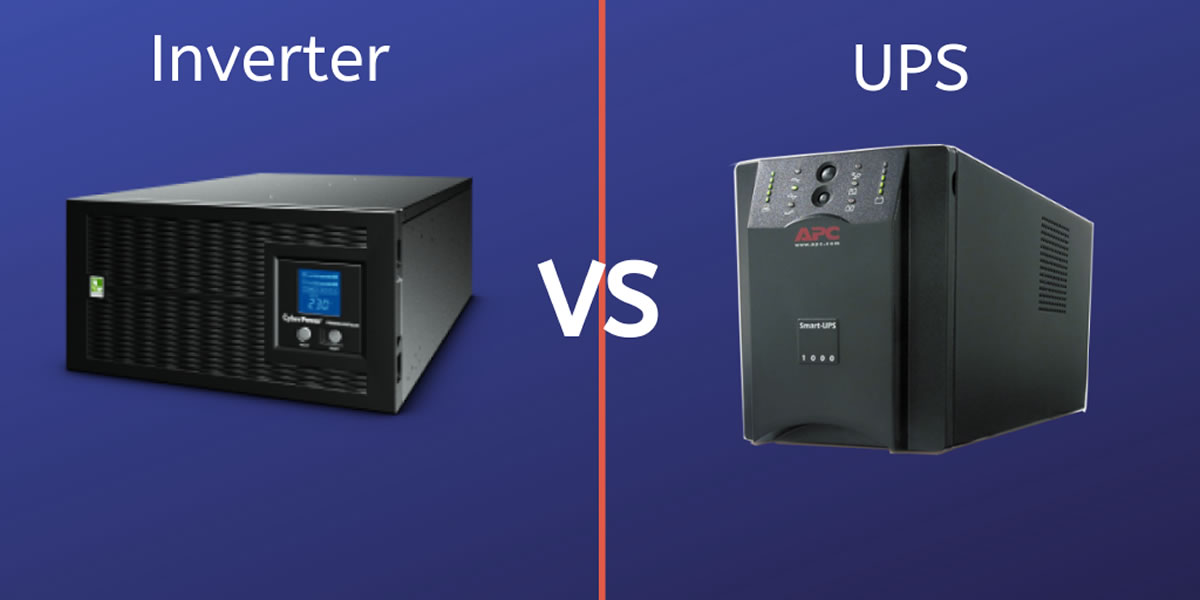Both an uninterruptible power supply (UPS) and inverter are backup power solutions for electrical systems
when there is a power failure. However, there are several differences between these two backups.
Definition of a UPS
In the event of a power failure, an uninterruptible power supply (UPS) will allow the continuous flow of power throughout the system to ensure the data is saved before the primary supply is fully shut down. This backup power solution has a battery and an inverter so when the UPS senses a power loss from the main supply, the battery will continue to supply power to the device. A UPS is also able to protect electrical devices from power surges.
Definition of an inverter
Another backup power supply, an inverter is an electronic circuit that converts alternating current (AC) to direct current (DC) and stores it in a battery. When the power supply is cut, the DC is converted back to AC and transmitted to the respective devices. Aspects such as the input and output voltage, frequency and overall power handling all depend on the specific type of inverter being used.
What are the main differences?
1. Time delays
When there is a break in the main power supply, an uninterruptible power supply will immediately switch from the main supply to the battery – taking about 10 to 15 milliseconds. However, there will be a delay of about 500 microseconds between the inverter switching from the main power supply to the battery.
2. Power supply function
The main function of the uninterruptible power supply is storage of an electric supply while the function of the inverter is converting AC power to DC power.
3. Connection
While the uninterruptible power supply is directly connected to the electronic devices, the inverter is linked to a battery first, which is then attached to the device’s circuit.
4. Input power requirements
The inverter has a wider range of input power – 170-270V of AC – while the uninterruptible power supply works at 240-270V AC.
5. Voltage fluctuations
When there is a power interruption, the output voltage needs to be smooth. When the two are compared, the voltage output of the uninterruptible power supply is better than that of the inverter.
6. Circuitry
Overall, the circuitry of the uninterruptible power supply is far more sophisticated than an inverter, resulting in a better quality output and lower time lag.
6. Cost of devices
The enhanced circuitry and faster power switch make the uninterruptible power supply a more expensive option than the inverter.
Why you need backup power solutions
With South Africa’s national grid often not able to sustain continuous power countrywide, load shedding will continue to be a part of our daily lives. In addition to this, aspects such as weather conditions can also result in unexpected power cuts which are detrimental to the smooth running of electronics. Even minor fluctuations in power supply can damage devices. This is why backup power supply options such as inverters and uninterruptible power supply devices are so important in the modern age of electronics.
While there are many differences between these two backup power supply devices, they both have their place. Inverters are generally preferred for the powering of general electrical appliances where delays in power supply don’t affect function. UPS are preferred for electronics that will be affected by delays in power – items such as computers, servers and work stations.


